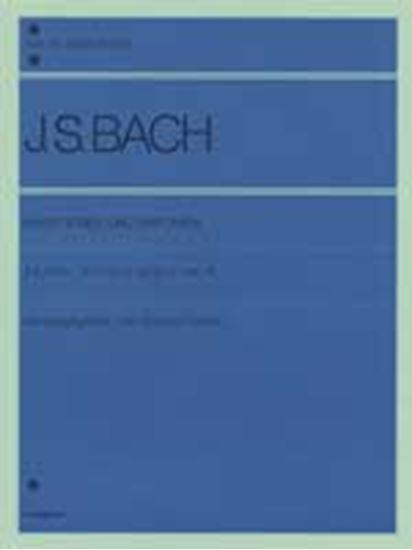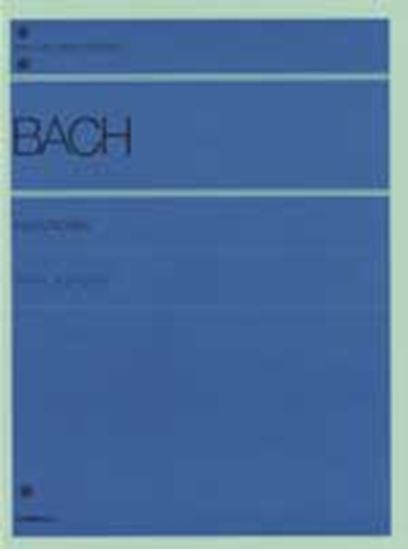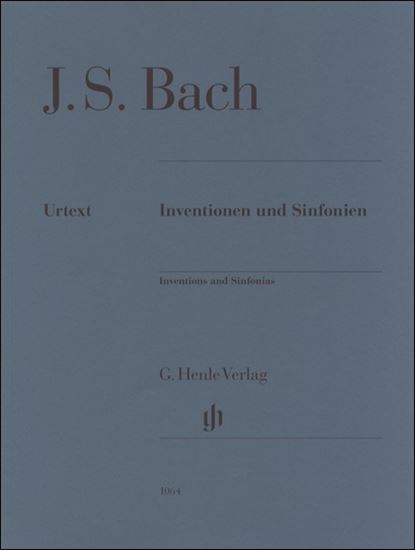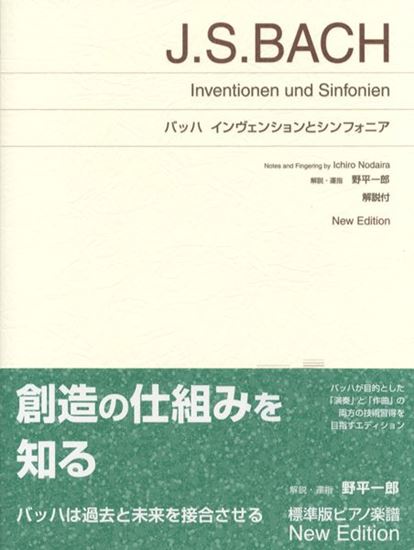Bach, Johann Sebastian : Sinfonia Nr.1 C-Dur BWV 787
Work Overview
Genre:pieces
Total Playing Time:1 min 10 sec
Copyright:Public Domain
Commentary (3)
Author : Takamatsu, Yusuke
Last Updated: September 18, 2020
[Open]
Author : Takamatsu, Yusuke
C major, 4/4 time.
This piece is fundamentally structured by flowing sixteenth-note stepwise motion, making it suitable for mastering the "cantabile style of playing" that Bach noted in his preface. This scalic theme appears in various keys and forms (inversion), combining and creating undulations. This avoids clear sectional divisions, and it has been pointed out as an "archaic compositional style with intricate development and structure."
If one were to describe the overall structure, it can be divided into four thematic exposition sections: the first exposition (from m. 1) and the second exposition (from m. 8) forming the first half, and the third exposition (from m. 12) and the fourth exposition (from m. 16) forming the second half.
Author : Hayashikawa, Takashi
Last Updated: March 15, 2018
[Open]
Author : Hayashikawa, Takashi
In measure 20, connecting the upper voice from the first beat to the downbeat of the second beat with the middle voice from the upbeat of the second beat to the end of the measure yields an inversion of the theme.
Score example provided by: Bärenreiter Verlag
Author : Ooi, Kazurou
Last Updated: March 12, 2018
[Open]
Author : Ooi, Kazurou
Sinfonia No. 1 in C Major
While there is no strict order for studying Inventions and Sinfonias, it seems natural to begin with No. 1. If this is a student's first Sinfonia, teachers must be particularly careful.
Even without considering the significant number of students who dislike Bach, the transition from Inventions to Sinfonias often coincides with the period of entering junior high school. This period is also when students are most likely to quit the piano, and the introduction of these three-voice Sinfonias can easily create further "reasons to quit."
Unlike the two-voice Inventions, first, inform your students that three-voice Sinfonias will take three to four times longer. Even for excellent students who have studied Inventions at a pace of one piece per week, make them aware that one Sinfonia will take over a month. In other words, convey that they will be studying extremely difficult pieces. At the same time, teach a specific finger technique. This is one of the techniques that must be practiced before students begin Sinfonias, and it is essential for much polyphonic music.
Please refer to the treble clef in measure 8, beats 3-4. The soprano and alto are descending in two voices, maintaining a sixth. There are several such passages in Sinfonia No. 1. Aim to connect these two voices using only the fingers, without the pedal. The basic exercise for this is described below.
Please follow the process below:
- First, play G with finger 1.
- Next, play E, a sixth above, with finger 5.
- After playing E, while holding down the G with finger 1, quickly replace finger 1 with finger 2.
- Since the G originally held by finger 1 is now held by finger 2, finger 1 is free. Use finger 1 to play F, a second below.
- Next, use finger 4 to play D, a second below the note held by finger 5.
- After playing, quickly replace finger 4 with finger 5 while still holding down D.
- Once D is held by finger 5, immediately replace finger 1 holding F with finger 2.
- Continue descending in the same manner.
- Practice this until you can descend quickly.
By mastering this technique, two-voice progressions in sixths can be connected perfectly without the use of the pedal. In the treble clef section from measure 14, beats 3-4, to measure 15, beat 3, the alto and soprano also progress in sixths. The same technique should be applied here.
Now, let's examine the piece from the beginning. The subject begins in measure 1, treble clef, in the soprano, and extends to the half note E in measure 2. The locations of the themes are as follows:
- Measure 1, beat 1 (afterbeat), Soprano
- Measure 2, beat 1 (afterbeat), Alto
- Measure 3, beat 1 (afterbeat), Bass
- Measure 5, beat 1 (afterbeat), Bass
- Measure 8, beat 3 (afterbeat), Bass
- Measure 12, beat 1 (afterbeat), Soprano
- Measure 13, beat 1 (afterbeat), Alto
- Measure 14, beat 1 (afterbeat), Bass
- Measure 15, beat 1 (afterbeat), Bass
- Measure 16, beat 1 (afterbeat), Alto
- Measure 19, beat 1 (afterbeat), Bass
Students should identify these themes and ensure they are heard more clearly than the other voices. Since the piece itself is very calm and flowing, there are no particularly strong fortes. However, even within these themes, it is appropriate to differentiate between what should be played softly and what should be played more prominently. For example, considering its mood and melodic contour, the theme in measure 12 could be played slightly louder than other themes.
From this point on, the study becomes more complex, so I will explain it as simply as possible. When Bach writes a theme, he alters its melodic contour according to the key. For instance, measure 1 is in C major, making this the original theme. If the theme in measure 2 begins on C, then B natural would normally need to be B flat to match the interval of the theme in measure 1. Furthermore, the interval from the last note of beat 3 to the first note of beat 4 in measure 1 is a major third. Normally, measure 2 should follow suit, but the corresponding place in measure 2 progresses by a major second. This is a compositional technique called "tonal answer," where the theme is altered to fit the prevailing key.
In the theme at measure 12, an unprecedented leap of a diminished fifth appears on beat 4. This has not occurred before. It can be considered a strong emotional expression.
Thus, even the same theme should convey various moods. Adjust dynamics and timbre according to the mood of the moment.
Another point to note when performing this piece is the independence of voices. If this is potentially the first Sinfonia for students, they must understand that it will not be as straightforward as the Inventions. For example, look at the treble clef in measure 3. The soprano line is G-F-E-D-E-F-D. However, ensure that it does not sound like G-F-E-C-D-E-F-D. C is an alto note, and it must not be heard as part of the soprano melody. As written in the score, the voices must sound independent. Similarly, in measure 4, beat 2, do not let it sound like E-D-C-B natural-A. D-C-B natural-A is handled by the alto, so it must be heard separately from the soprano. Basically, it is good practice to differentiate the voices through timbre and dynamics, for example, making the soprano brilliant and the alto subdued. The reason why voices must be independent will become clear later. For now, simply strive to make all three voices audible.
PTNA & Partner Channel Videos(3items)
Sheet MusicView More
Scores List (42)

カワイ出版

(株)ヤマハミュージックエンタテインメントホールディングス

(株)全音楽譜出版社

(株)全音楽譜出版社

(株)ドレミ楽譜出版社

(株)音楽之友社

(株)全音楽譜出版社

(株)音楽之友社

(株)音楽之友社

(株)ドレミ楽譜出版社

(株)ドレミ楽譜出版社

(株)ドレミ楽譜出版社

(株)ドレミ楽譜出版社

ヘンレー

ヘンレー

カワイ出版

(株)渓水社

(株)音楽之友社

(株)全音楽譜出版社

(株)エー・ティ・エヌ

(株)全音楽譜出版社

カワイ出版

(株)音楽之友社

(株)音楽之友社

ヘンレー

ヘンレー

(株)学研プラス


















